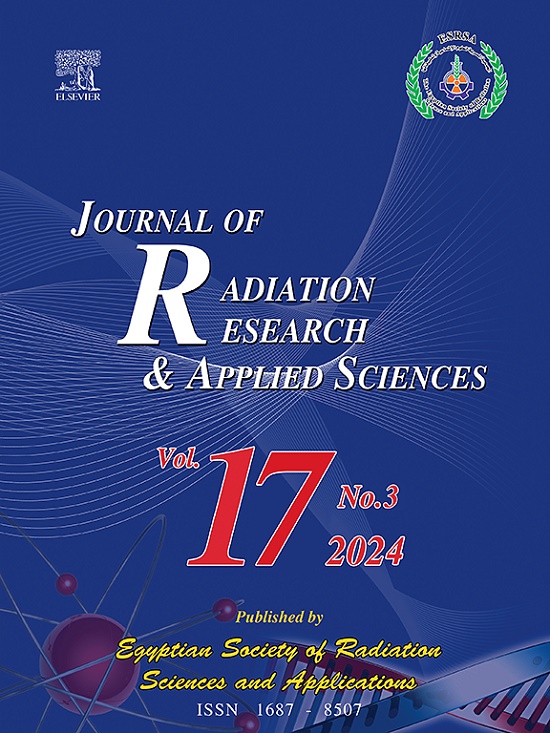Unsupervised spatial registration of fetal cranial ultrasound slices for radiomics analysis
IF 1.7
4区 综合性期刊
Q2 MULTIDISCIPLINARY SCIENCES
Journal of Radiation Research and Applied Sciences
Pub Date : 2025-05-25
DOI:10.1016/j.jrras.2025.101602
引用次数: 0
Abstract
Objective:
Ultrasound examinations are clinically required for pregnant women to determine whether the fetal brain is developing normally. Doctors often need to manually adjust the 2-dimensional (2D) ultrasound probe to obtain a standard cranial plane for conducting fetal cranial ultrasound radiomics analysis, a process that is both challenging and time-consuming. To address this issue, this paper proposes an unsupervised registration method based on contrastive learning aimed at predicting the position of the 2D slice in 3-dimensional (3D) space.
Methods:
We exploit the anatomical consistency of adjacent slices in cranial space and introduce a novel pretext task. This task enables the contrastive learning model to learn the features of 2D slices at different spatial locations. Then, an automated spatial sampling method is used to construct a retrieval database that contains anatomical and spatial information for slices at various positions, which is used to perform spatial registration of 2D slices at arbitrary locations.
Results:
We evaluated our method using 39 cases of mid-gestation 3D ultrasound data from the hospital. The experimental results demonstrate that our method achieves excellent performance across four registration metrics, with plane angle at 6.870°, Euclidean distance at 8.969 voxels, normalized cross-correlation at 0.882, and structural similarity at 0.771. The results confirm the efficiency of our method with small sample data and demonstrate its reliable generalization and transferability.
Conclusion:
This method can provide clinicians with precise positional guidance for the rapid localization of standard planes, which can be used for subsequent fetal cranial radiomics research. Moreover, our approach does not require predefined registration standards or manual annotations, and it can be extended to other registration tasks, offering a reference for researchers.
用于放射组学分析的胎儿颅骨超声片的无监督空间配准
目的:临床需要对孕妇进行超声检查,以确定胎儿大脑发育是否正常。医生通常需要手动调整二维超声探头以获得标准颅脑平面,以便进行胎儿颅脑超声放射组学分析,这一过程既具有挑战性又耗时。为了解决这一问题,本文提出了一种基于对比学习的无监督配准方法,旨在预测二维切片在三维空间中的位置。方法:利用颅间隙相邻切片的解剖一致性,引入一种新的托词任务。该任务使对比学习模型能够学习二维切片在不同空间位置的特征。然后,采用空间自动采样的方法,构建包含不同位置切片解剖和空间信息的检索数据库,对任意位置的二维切片进行空间配准。结果:利用医院39例妊娠中期三维超声资料对该方法进行了评价。实验结果表明,该方法在平面角为6.870°、欧几里得距离为8.969体素、归一化互相关为0.882、结构相似度为0.771的4个配准指标上均取得了优异的配准性能。结果证实了该方法在小样本数据下的有效性,并证明了其可靠的泛化和可移植性。结论:该方法可为临床医生快速定位标准平面提供精确的定位指导,可用于后续胎儿颅放射组学研究。此外,我们的方法不需要预定义的注册标准或手动注释,并且可以扩展到其他注册任务,为研究人员提供参考。
本文章由计算机程序翻译,如有差异,请以英文原文为准。
求助全文
约1分钟内获得全文
求助全文
来源期刊

Journal of Radiation Research and Applied Sciences
MULTIDISCIPLINARY SCIENCES-
自引率
5.90%
发文量
130
审稿时长
16 weeks
期刊介绍:
Journal of Radiation Research and Applied Sciences provides a high quality medium for the publication of substantial, original and scientific and technological papers on the development and applications of nuclear, radiation and isotopes in biology, medicine, drugs, biochemistry, microbiology, agriculture, entomology, food technology, chemistry, physics, solid states, engineering, environmental and applied sciences.
 求助内容:
求助内容: 应助结果提醒方式:
应助结果提醒方式:


